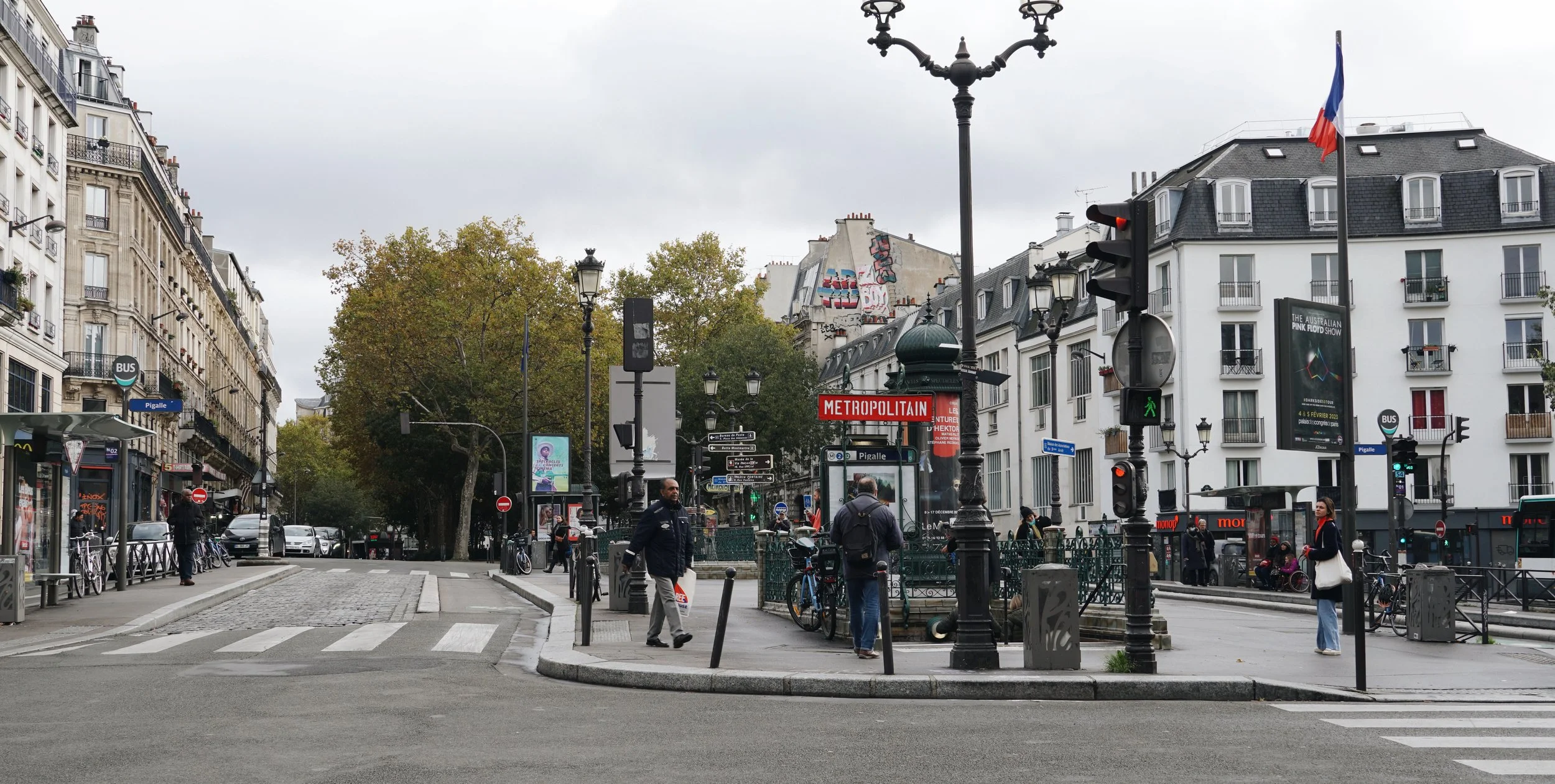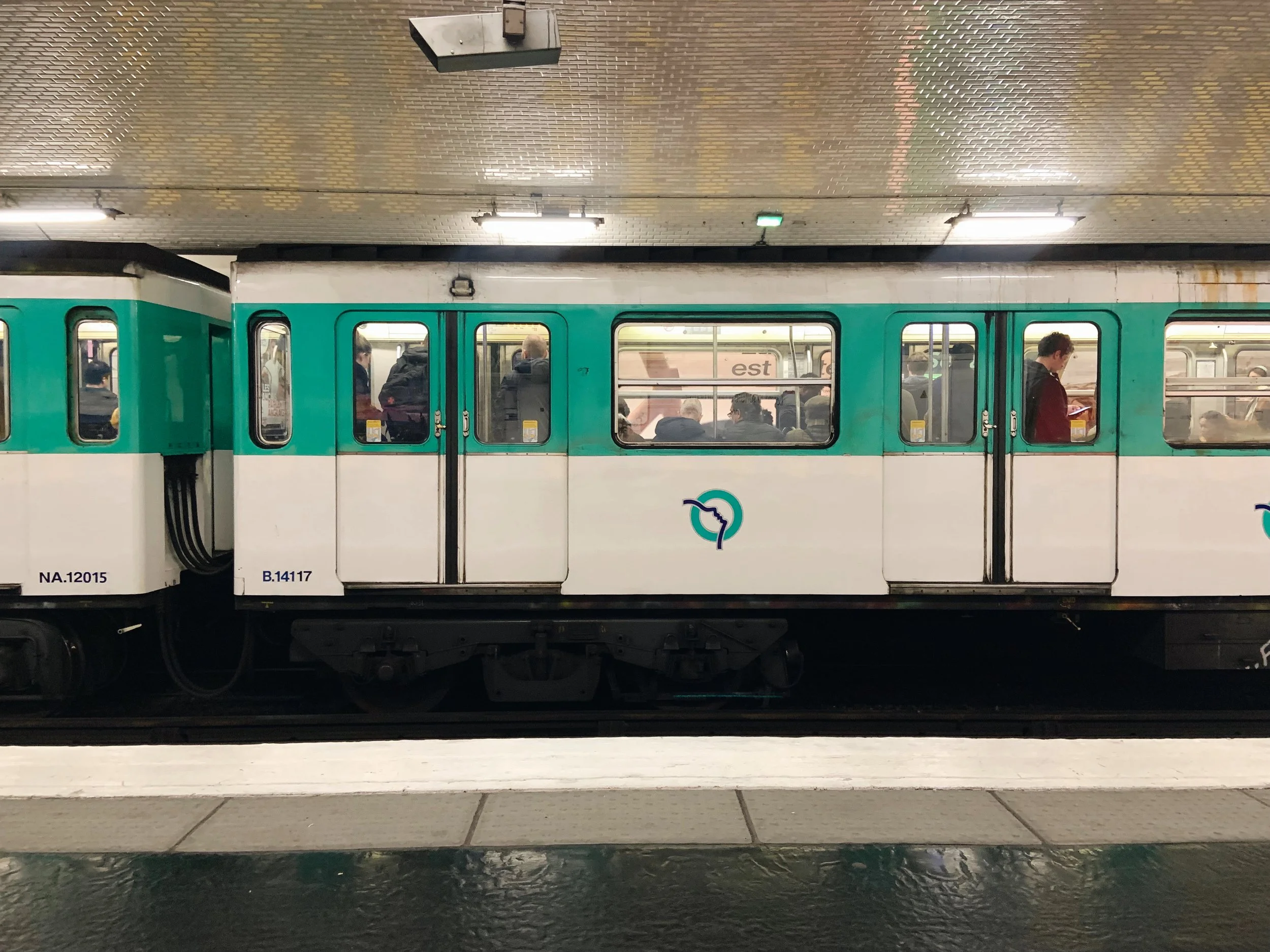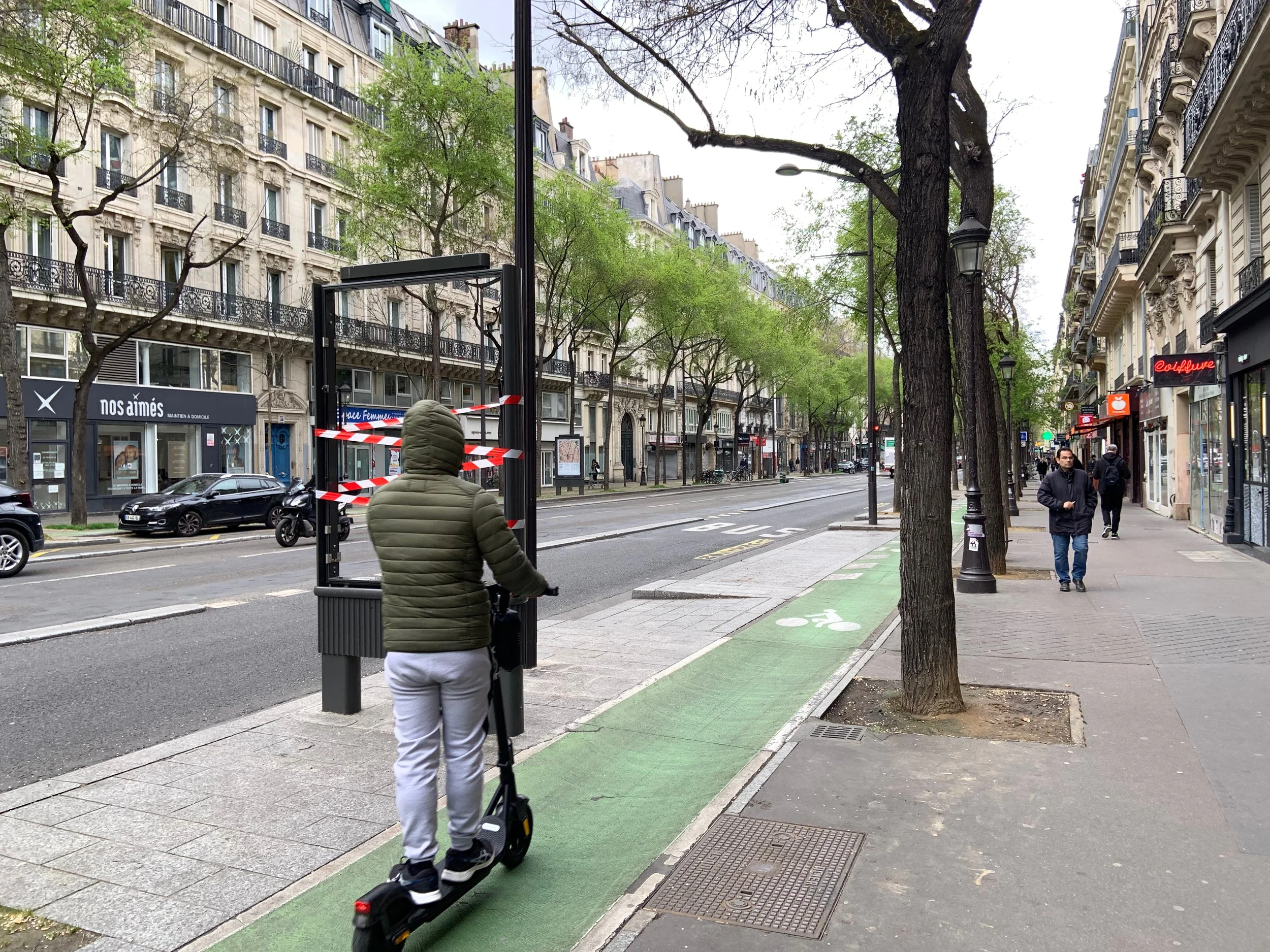How to Get Around Paris
Metro, Taxis, Bikes, and More
When visiting Paris for the first time, figuring out how to actually get around the city can quickly feel overwhelming. Whether you’re staying for a day or a week, no one wants to waste time worrying about getting from destination to destination. To help make traveling around town as easy as possible during your stay, I’ve put together a little transportation guide. In the guide, I discuss the different types of transportation available in Paris, tips and tricks for each one, travel apps to download, and even a few ways to save money.
Before you arrive: download these apps:
Citymapper:
The first step in mastering how to get around Paris is to make sure you have the Citymapper App downloaded on your phone. Of course, you can do it when you get here, but why wait?
Throughout the years of living in Paris, I’ve tried out several different travel apps but none of them come even remotely close to Citymapper in terms of user-friendliness and most importantly, transport time accuracy. It knows when the metro has delays or if specific lines aren't running and even when strikes happening. Overall Citymapper is a great way to get your bearings in Paris and arrive at your destination on time.
SNCF Connect:
SNCF Connect is another helpful application to download before you arrive in Paris. It’s the app that most French people use to purchase train tickets when traveling around France some bordering countries. While you probably won’t be needing it for this purpose, it has a cool feature that allows users to purchase train tickets for the Ile-de-France (Paris) region that can then be virtually loaded onto a Navigo Card.
This app feature allows you to choose from several different travel pass options, which we will go into further detail about later on in the “metro” section of the guide. For now, all you really need to know is that this app can help save time and money when purchasing metro tickets for the Paris region.
Vélib, App Officielle:
One of the most efficient and scenic ways to get around the city is by bike. Fortunately for locals and tourists, Paris has a bike-sharing system named Vélib, which makes it really easy to ride a bike without having to go through the hassle of owning or renting one yourself. Biking around a new city can certainly seem intimidating, but in Paris, it’s really easy and safe. We’ll go into more details about biking in Paris later on, but if it's an option that appeals to you, go ahead and download it before you arrive.
Uber:
Uber might seem like an obvious app if you’re already in the practice of using it, but if you live in a place where you don’t need Uber, then definitely download it before you arrive. The app allows you to call cars to pick you up and drop you off at your destination for relatively inexpensive prices. It’s a great option if you’re feeling a bit too lazy to take public transportation or get need a ride home after a late night.
The Different Ways to Get Around Paris:
Now that you’ve prepped yourself by downloading all the necessary apps, let’s dive into all the different ways you get around town including the metro, RER train, buses, bikes, taxis, walking, and even scooters! I would like to preface this by saying, none of these options are necessarily better than the others. What you choose really depends on your budget, personal preferences, and energy levels when you're visiting the city. Either way, it’s good to know all the options out there.
Metro:
The metro is Paris’ underground train system and also happens to be one of the easiest, cheapest, and quickest ways to get around. The metro is fantastic and if you want a more in-depth explanation of how to use it, then watch Jay’s video here:
For now, in this guide, we’ll discuss some things that may have changed since that video was released and share some tips and tricks for using the metro during your trip. For starters, one single metro ride now costs €2.10 and the ticket can be purchased in the metro station from one of the machines or station attendants. The machines operate in a few languages including French, English, and Spanish, so even if you don’t speak French you shouldn't have any problems. One of the major changes to buying the tickets is that in 2021, they stopped allowing the bulk ticket (cachet de dix) purchase option in an effort to reduce paper waste.
Instead of dealing with the hassle of paper tickets, I suggest that you get a Navigo card during your stay. The Navigo is the name for the plastic metro transportation card, and you can purchase single or books of tickets or in daily, weekly, or unlimited monthly bundles. The Navigo pass can only be purchased at one of the information desks in the metro, not at the automated ticket stations. The service ticket employees tend to speak English and are very nice, so long as you greet them with a proper bonjour. If you’d like to know what to expect before talking to an agent, here are the options they’re likely to suggest you try:
(1) Navigo Easy: Allows you to top up your Navigo with 10 or 20 tickets at a time and use them as you go. You can even do it on your app directly from your phone.
(2) Navigo Decouverte: If you’re the type of person that wants unlimited travel for convenience's sake and to make sure you can get around town without having to think about it, you can top up your Navigo for unlimited travel for a week at a time (including all 5 zones …. Versailles, Disneyland, etc. without having to worry about it).
Before moving on to other transportation methods, here are a few quick tips about the Paris metro:
It is very safe! Cops wander around all the time but there are many pickpockets so be mindful of your surroundings. The hotspots for pickpockets tend to be at the turnstiles and in crowded metros. When you enter a crowded metro in particular, be sure to have no valuables in your pockets, take your backpack and put it in front of you if it's crowded, and try to avoid having your phone out.
While Paris’s Metro currently services 16 different lines all going in different directions, the metro itself is really easy to use. In each station, there are several signs every few steps signaling which direction you are heading, what metro station you're at, and where to catch transfer trains. Nowadays we tend to rely on our phones to tell us where to go, but when it comes to the metro just look around you and you’ll easily find your way.
One last helpful metro tip we have is that when you are exiting the metro (especially at big stations with lots of exits such as Charles de Gaulle - Etoile or Châtlet) look on the wall along the platform for a surface map with the exits listed, and see which exit number corresponds with where you want to be when you exit the metro station. That way you won’t get to the street and end up having to walk an extra 10 min to get to where you want to go.
Pro Tip: Citymapper will tell you which exit is best if you put your final destination in from the get-go.
RER
The RER (Réseau Express Régional) is a regional express network transit system that can be described as the metro for the greater Paris region. The trains themselves are a bit fancier and larger in size than the Paris metro and are the trains that thousands of people use every day to commute from the suburbs to the city center. I don’t recommend using the RER for anything other than getting to and from the airport, visiting Versailles and Disneyland, or if you are staying long enough and want to visit some castles in the surrounding region.
In order to use the RER outside of Paris, you have to charge your Navigo Decouverte for zones 1-5 or, if you buy the individual tickets, you have to buy the one that goes directly to your destination (you can type your destination in when you purchase the ticket). Unlike the metro, when you take the RER you’ll need to rescan your ticket or Navigo in order to exit the station, so don’t rip up your paper ticket after you scan it. In fact, don’t rip your ticket when you’re on the metro either, as you might be asked to show it at any point during your trip, and you’ll be fined if you don’t have it.
It’s also good to note that the RER forks out the further you get out of Paris, so it's important to pay attention to the end of the line to make sure you get on the correct train. Once you are on the RER platform, a sign will display which is the destination/last stop for the approaching train. If you get on the wrong train it might shoot you out of your way and you’ll have to come back and try it all over again. The more modern trains will even show the stops using a digital display so you can easily check if you are headed for the correct destination.
My last tip for the RER and metro is that when it comes to using the escalators be sure to follow this general rule: if you want to stand and be taken up or down by the escalator then stand on the right side (not the middle) so that people can pass you on the left side. If you forget this tip, you’ll quickly be reminded by someone trying to pass you with an exaggerated “pardon” or “excusez-moi.”
Bus:
I’m not personally the biggest fan of the busses so I’m not going to necessarily recommend you take them, but if you prefer a more scenic route than the underground metro and have lots of extra time on your hands then the bus might be a good option for you. It’s important to know that traffic in Paris is pretty bad most hours of the day, so you can expect delays if you do decide to take the bus.
Taking the Paris bus is a pretty straightforward process. Once you find the bus stop, you’ll see a sign displaying when the next bus should be arriving, and when you see the bus approaching be sure to give the driver a wave to signal that you’d like to get on. Otherwise, if the driver doesn't see you, they won’t be stopping. This applies to when you want to get off the bus as well. Be sure you hit the little red “arret” stop button, or else the driver will keep going and skip stops on the route.
When it comes to buying a ticket, you can still purchase a single-ride ticket for 2 euros from the driver or use one of the paper metro tickets you might’ve purchased from the metro station. Just be sure to have exact change or small bills, or the driver might not have the exact change and kick you off. If you already loaded your Navigo with tickets, then don’t forget to validate your pass using the scan machine on the bus.
One of the coolest new updates about the Paris busses is that you can text a number and purchase your ticket directly: When you see your bus approaching, send the Bus+number of your line (e.g. Bus96) to the short number 93100. You will then immediately receive an SMS which will act as a ticket. The ticket charge gets added to your next phone bill so you can avoid the hassle of paper or scanning altogether.
Bike
Biking is one of the quickest and most scenic ways to get around Paris and with all the new bike lanes that have been added recently it's becoming more and more safe and accessible to go pretty much anywhere. Jay has made an extensive video on how to bike in Paris which you should check out if you want more details on how to ride safely in the city as well as how to use the Velib’ system.
If you are using Velib’ or bike ride share such as Lime (by Uber), then be sure to check the condition of the bike before you take it out for a ride. They get used a lot so they can be pretty beaten up. Quickly make sure the tires are pumped, the chain is on the bike, adjust the seat to your height, and if you take an electric (blue Velib) bike, that it's charged fully, and that the brakes work before you commit to taking it out.
One thing to be aware of with the Velib is that because you have to return them to one of the docking stations, you must make sure that there’s actually space at the station. For the most part, you won’t have any trouble, but there are some stations in more popular neighborhoods that won’t have parking spaces on the busier days like Fridays and Saturdays. The app will tell you if there's space or not, so be sure to look in advance.
Overall, as I said, biking in Paris isn’t too complicated so long as you stay in the bike lanes, stay to the right so people can pass you, don’t listen to music, yield to pedestrians, and follow the traffic lights. There are always police officers out ticketing bikers who break the rules, especially in the more congested traffic areas, so be a good tourist and follow the rules.
Scooters: Lime, Dot, Scooter Lanes, & Parking Spaces
You might be familiar with them already, seeing as they are popular in lots of cities around the world. Rideshare scooters like Uber or Lime can be used through the Uber app so you don’t have to download an additional one, which is really handy. As far as getting around town goes, my advice is to follow the same rules as when it comes to biking and don’t ride them on the sidewalks.
The scooters go fairly fast, so they can be a bit dangerous, especially if you aren’t paying attention or don’t know where you're going. They are also really expensive because most of the companies charge by minute or distance so the bill quickly adds up. With that being said, they are a fun way to zoom around the city for some sightseeing or a great alternative for a way to get home late at night after the metro and buses stopped running.
Our only other tips are to be sure to park them in the designated locations. Don’t be lazy and park them randomly on the sidewalk because it's annoying for everyone else to have to walk around them.
Lastly, just know that it’s technically illegal to have more than one person on a scooter at a time so be aware that you might get a ticket if you do decide to do this.
Uber and Taxis: Other Ride-Sharing Apps
Uber exists here in Paris so if you are a fan of rideshares then it's good to know you have the option. The Uber system functions just the same as it does in any other city, so I don’t think there’s much explaining to do here. It’s the same app even if you are coming from a different country and most of the Uber drivers in our experience speak a little bit of English, at least enough to confirm the name and destination.
I also recommend using taxis from time to time because they are more often than not cheaper than Uber, especially when you’re going shorter distances in Paris. If you don’t want to take public transportation when going to and from the airport, taxis are usually a better option than taking an Uber because it’s a flat rate in the mid 50’s depending on which part of town you are headed to.
Before getting in a taxi make sure they have a “Taxi” sign on the top, and a meter running on the dash, and ask up front if they take cards because some of them only accept cash. It’s also good to know that you don't have to tip if you don’t want to, but of course, it's always nice to throw in an extra euro or two. Lastly, taxis can be great but depending on the traffic you could end up stuck for a while, so if you’re in a rush then the metro might be a better option.
Walking:
Last but not least, walking is a great way to get around the city - it’s the cheapest and most scenic way to enjoy the ambiance of Paris. Our biggest piece of advice is don’t underestimate the power of getting in walking shape before your trip. You’ll be putting in a lot of steps throughout your trip to Paris even if you’re using all these modes of transportation. By the end of it, you’ll be surprised just how much you end up walking throughout your stay!
Et Voila!
I’ve covered several different ways you can get around town during your next trip to Paris. I hope you found all the tips and tricks helpful! If you’d like more Paris travel advice then head over to Jay’s YouTube channel or purchase the comprehensive 2023 edition of Jay’s Paris in my Pocket Guide.






